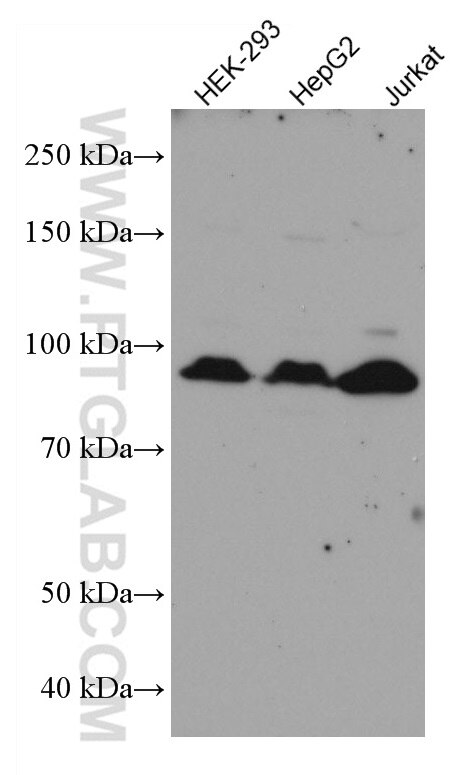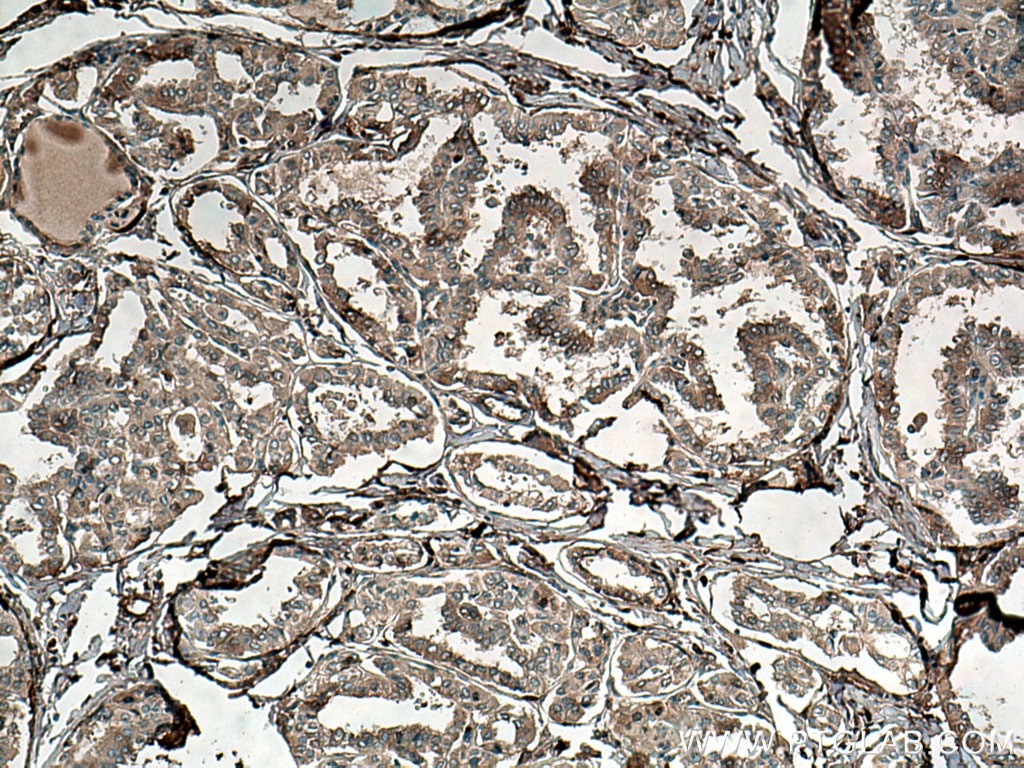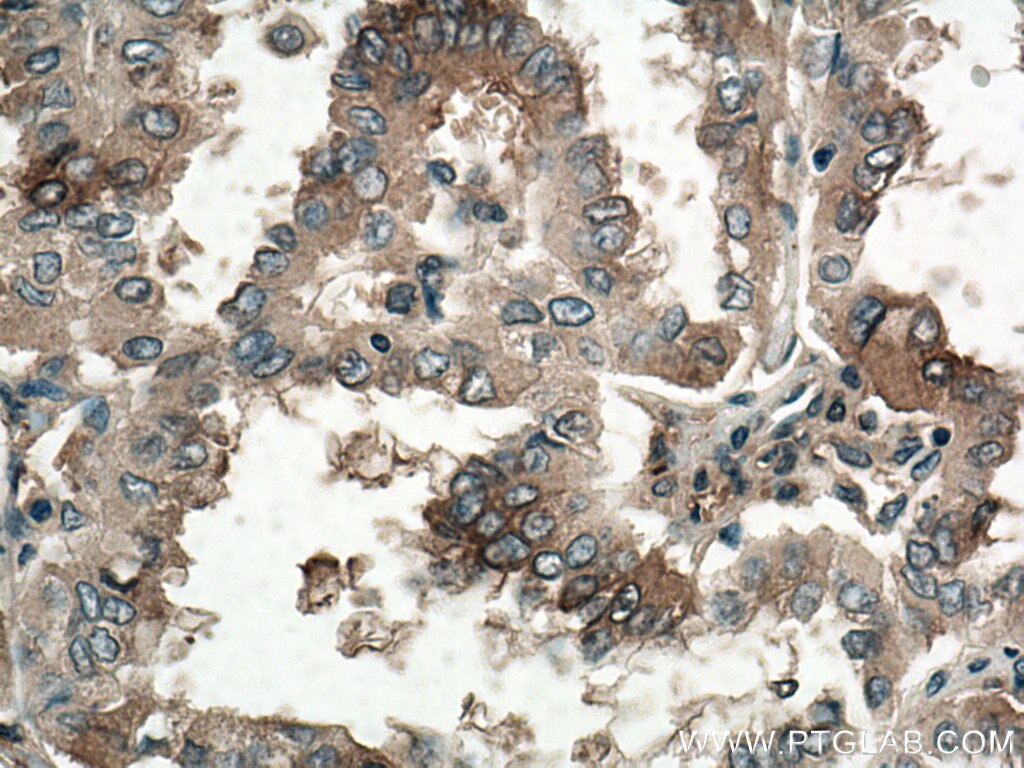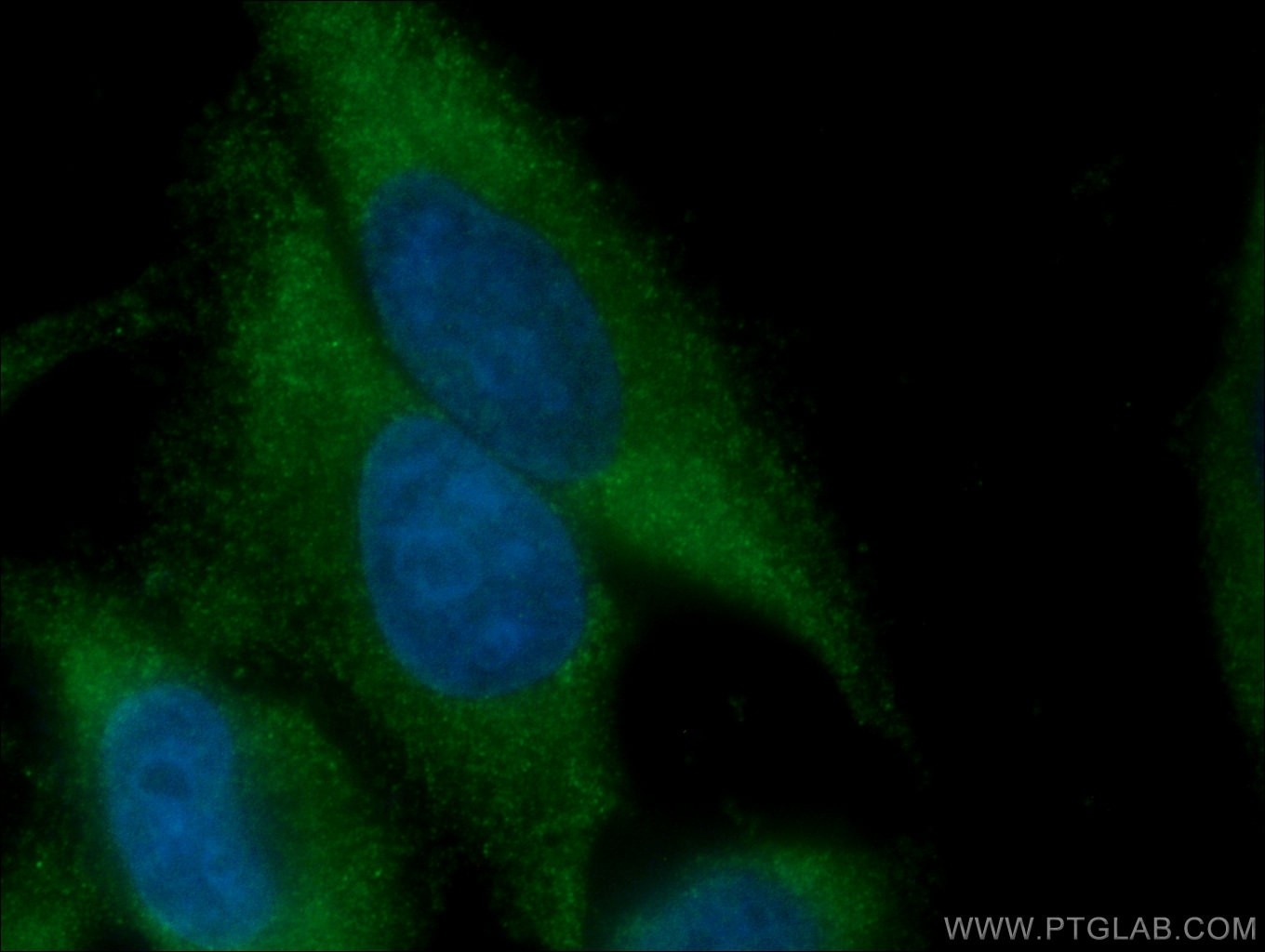ATG9A Monoklonaler Antikörper
ATG9A Monoklonal Antikörper für IF, IHC, WB, ELISA
Wirt / Isotyp
Maus / IgG1
Getestete Reaktivität
human und mehr (1)
Anwendung
WB, IHC, IF, ELISA
Konjugation
Unkonjugiert
CloneNo.
1D12E11
Kat-Nr. : 67096-1-Ig
Synonyme
Galerie der Validierungsdaten
Geprüfte Anwendungen
| Erfolgreiche Detektion in WB | HEK-293-Zellen, HepG2-Zellen, Jurkat-Zellen |
| Erfolgreiche Detektion in IHC | humanes Schilddrüsenkarzinomgewebe Hinweis: Antigendemaskierung mit TE-Puffer pH 9,0 empfohlen. (*) Wahlweise kann die Antigendemaskierung auch mit Citratpuffer pH 6,0 erfolgen. |
| Erfolgreiche Detektion in IF | HepG2-Zellen |
Empfohlene Verdünnung
| Anwendung | Verdünnung |
|---|---|
| Western Blot (WB) | WB : 1:2000-1:10000 |
| Immunhistochemie (IHC) | IHC : 1:300-1:1200 |
| Immunfluoreszenz (IF) | IF : 1:50-1:500 |
| It is recommended that this reagent should be titrated in each testing system to obtain optimal results. | |
| Sample-dependent, check data in validation data gallery | |
Veröffentlichte Anwendungen
| WB | See 2 publications below |
| IF | See 1 publications below |
Produktinformation
67096-1-Ig bindet in WB, IHC, IF, ELISA ATG9A und zeigt Reaktivität mit human
| Getestete Reaktivität | human |
| In Publikationen genannte Reaktivität | human, Maus |
| Wirt / Isotyp | Maus / IgG1 |
| Klonalität | Monoklonal |
| Typ | Antikörper |
| Immunogen | ATG9A fusion protein Ag24278 |
| Vollständiger Name | ATG9 autophagy related 9 homolog A (S. cerevisiae) |
| Berechnetes Molekulargewicht | 837 aa, 94 kDa |
| Beobachtetes Molekulargewicht | 94 kDa |
| GenBank-Zugangsnummer | BC065534 |
| Gene symbol | ATG9A |
| Gene ID (NCBI) | 79065 |
| Konjugation | Unkonjugiert |
| Form | Liquid |
| Reinigungsmethode | Protein-G-Reinigung |
| Lagerungspuffer | PBS mit 0.02% Natriumazid und 50% Glycerin pH 7.3. |
| Lagerungsbedingungen | Bei -20°C lagern. Nach dem Versand ein Jahr lang stabil Aliquotieren ist bei -20oC Lagerung nicht notwendig. 20ul Größen enthalten 0,1% BSA. |
Hintergrundinformationen
ATG9A is the only transmembrane ATG protein essential for autophagy. It plays a key role in the organization of the preautophagosomal structure/phagophore assembly site (PAS). It has been reported that ATG9A expression is increased in oral squamous cell carcinoma and breast cancers. The inhibition of ATG9A can lead to an inhibition of cancer cell proliferation and invasion.(PMID: 29437695, 29568063)
Protokolle
| Produktspezifische Protokolle | |
|---|---|
| WB protocol for ATG9A antibody 67096-1-Ig | Protokoll herunterladen |
| IHC protocol for ATG9A antibody 67096-1-Ig | Protokoll herunterladen |
| IF protocol for ATG9A antibody 67096-1-Ig | Protokoll herunterladen |
| Standard-Protokolle | |
|---|---|
| Klicken Sie hier, um unsere Standardprotokolle anzuzeigen |
Publikationen
| Species | Application | Title |
|---|---|---|
NPJ Parkinsons Dis Regulators of proteostasis are translationally repressed in fibroblasts from patients with sporadic and LRRK2-G2019S Parkinson's disease | ||
Invest Ophthalmol Vis Sci HSF4 Transcriptionally Activates Autophagy by Regulating ATG9a During Lens Terminal Differentiation | ||





